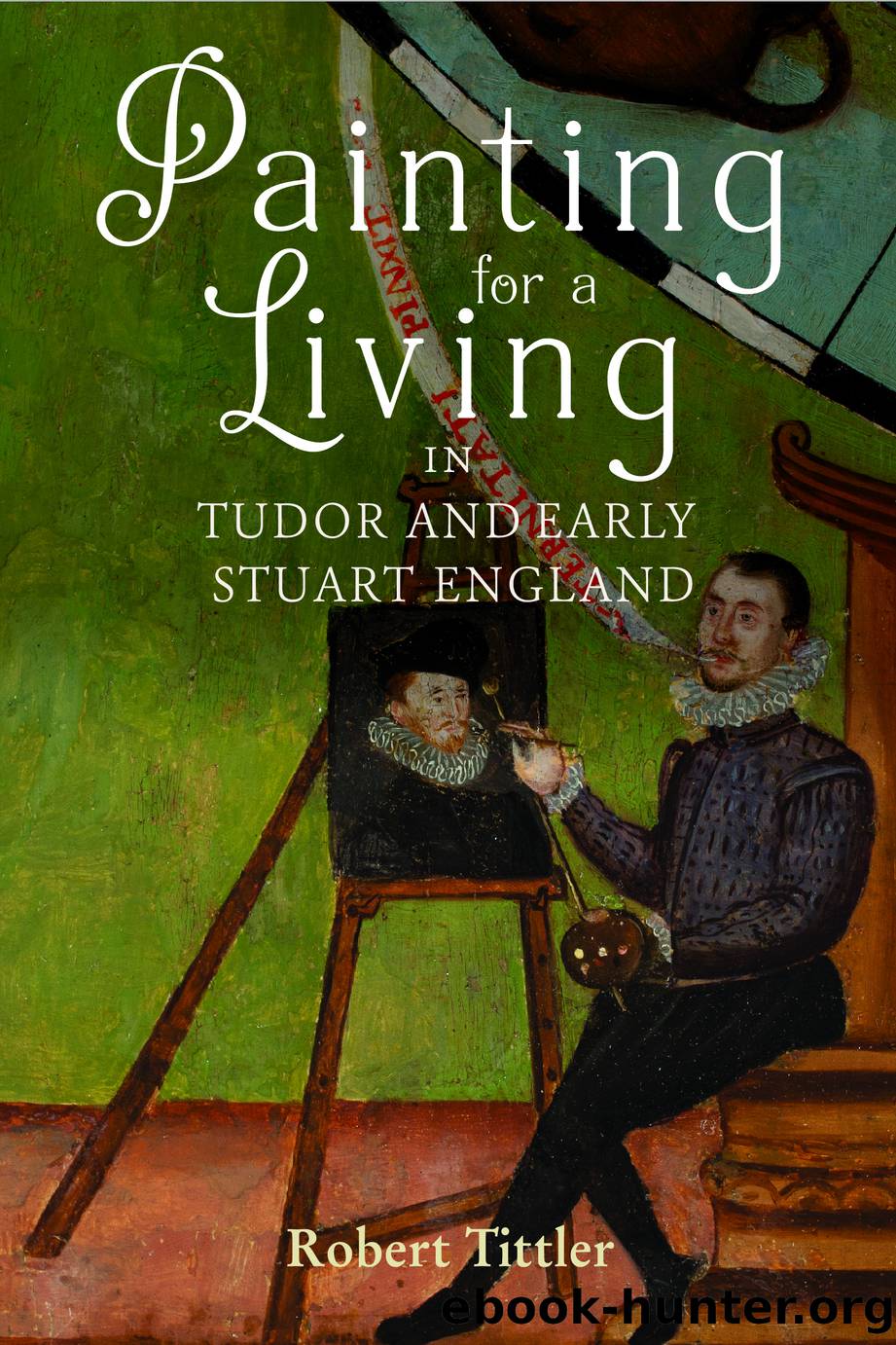Painting for a Living in Tudor and Early Stuart England by Robert Tittler;

Author:Robert Tittler;
Language: eng
Format: epub
Publisher: Boydell & Brewer
Published: 2022-03-04T00:00:00+00:00
6
Glass Painters
Of all the sub-species of the painting genus, the glass painting of this era proved more distinctive, and arguably more vulnerable to the influence of broad historical movements, than virtually any other. It also required a skill set of its own, some components of which were unique to its practitioners. In all, while some painters-of-all-work, and certainly some arms painters, may have painted on glass at one time or another, glass painting itself remained a more distinct and specialized craft. Despite its very considerable significance in pre-Reformation times, its revival in the early seventeenth century, and its close ties with such other visual crafts as heraldic drawing and painting, glass painting is also distinctive for somehow managing to escape the level of scholarly attention accorded to the other painting genres.1 It is profoundly ironic, as Sarah Brown and David OâConnor have noted, that glass painters, âworking in a medium which ⦠is concerned with light, should end up in relative obscurityâ.2
A number of factors contribute to this neglect. Part of it may have to do with the large proportion of painted glass which consisted of arms painting and which, as we have seen, has also failed to garner much of a place in the art historical canon. A large part no doubt has to do with the destruction of so much stained glass itself during and after the Reformation, so that its physical remains cannot be studied as well as one would like to do. And part no doubt lies in the misleading assumption that âstainedâ glass was not painted at all, but rather consisted of intricate designs made from individual pieces of pre-coloured glass. Yet this was rarely the case. Almost all English-made glass was white; some foreign glass was red and occasionally other colours. But at least in England, nearly all the other colours in âstainedâ glass were painted on in one way or another.3
One also tends to assume that âstainedâ glass painting, not to mention âglaziersâ themselves, remained occupationally distinct from other painting specialities. To this there is some truth, though the craft of âglazingâ had always involved elements of drawing and painting, and would continue to do so. Posterity has come to think of Richard Butler (fl. pre-1609â38), one of the most eminent artisans of his time, as a glazier, but in his will he referred to âmy Arte, misterie or occupation of payntinge of glasseâ.4 Traditional glaziers began a project by producing a detailed drawing, known as a vidimus, to guide the subsequent creation of a finely detailed cartoon. The latter indicated the precise shapes and colours of the final design, so that a monochromatic glass sheet placed over it could be cut and painted accordingly. Firing then annealed the paint to the surface of the individual pieces of cut glass. Once cooled, the pieces were framed in lead, and then soldered together with adjacent pieces according to the cartoon plan. All these steps could be done in the workshop before the completed panels were installed in their intended place.
Download
This site does not store any files on its server. We only index and link to content provided by other sites. Please contact the content providers to delete copyright contents if any and email us, we'll remove relevant links or contents immediately.
| Africa | Americas |
| Arctic & Antarctica | Asia |
| Australia & Oceania | Europe |
| Middle East | Russia |
| United States | World |
| Ancient Civilizations | Military |
| Historical Study & Educational Resources |
Room 212 by Kate Stewart(4741)
The Crown by Robert Lacey(4574)
Endurance: Shackleton's Incredible Voyage by Alfred Lansing(4508)
The Iron Duke by The Iron Duke(4124)
The Rape of Nanking by Iris Chang(4024)
Killing England by Bill O'Reilly(3899)
Joan of Arc by Mary Gordon(3786)
Say Nothing by Patrick Radden Keefe(3726)
I'll Give You the Sun by Jandy Nelson(3274)
Shadow of Night by Deborah Harkness(3177)
Hitler's Monsters by Eric Kurlander(3165)
Mary, Queen of Scots, and the Murder of Lord Darnley by Alison Weir(3069)
Blood and Sand by Alex Von Tunzelmann(3060)
Darkest Hour by Anthony McCarten(3019)
Margaret Thatcher: The Autobiography by Thatcher Margaret(2972)
Eleanor & Park by Rainbow Rowell(2944)
Red Famine: Stalin's War on Ukraine by Anne Applebaum(2816)
Book of Life by Deborah Harkness(2721)
The One Memory of Flora Banks by Emily Barr(2686)
